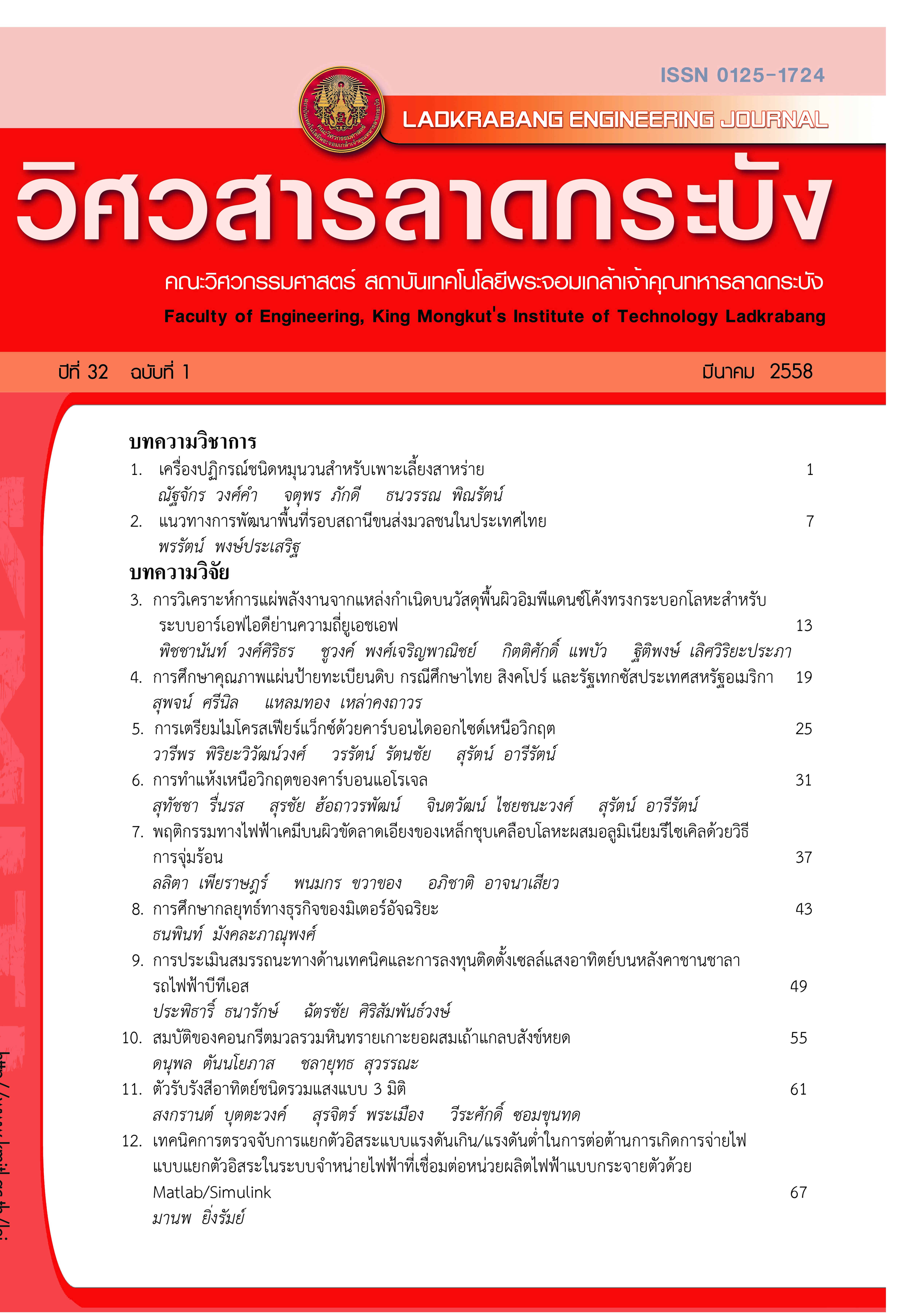Properties of Koh Yor Sandstone Aggregate Concrete Blended with Song Yod Rice Husk Ash
Keywords:
Song Yod rice husk ash,, Sandstone aggregate,, Pozzolanic reaction,, Hydration temperatureAbstract
The experimental investigation was carried out to evaluate the effectiveness of Song Yod rice husk ash (SYRHA) on the properties of fresh and hardened concrete containing Koh Yor sandstone coarse aggregates (KYSCA). The SYRHA was ground and partially replaced the ordinary Portland cement with the proportion of 15, 20 and 25% by weight. The water to cementitious material ratio is maintained at 0.55 for all mixtures. The KYSCA concrete samples cast in the mould of 10´10´10 cm and cured in water for 7 and 28 days and uncured. The examined properties include the bulk density, water absorption, Shore hardness and compressive strength. The highest compressive strength value was measured in the mixture containing 15% SYRHA cured 28 days while the lowest compressive strength value was noted in 25%SYRHA uncured. It is indicated that the SYRHA can be used as a pozzolanic material, replacing cement containing KYSCA as high strength concrete.
References
[2] M. Yılmaz and A. Tugrul, “The Effects of Different Sandstone Aggregates on Concrete Strength,” Construction and Building Materials, Vol.35, pp. 294-303, Oct., 2012.
[3] P. S. P. Fontanini, L. L Pimentel, A. E. Jacintho and C. L. Migliato, “Brazilian Geological Sandstone Characterization and Its Utilization as Aggregate in Structural Concrete,” Applied Mechanics and Materials, Vol.271-272, pp.141-146, 2012.
[4] J. R. Mackechnie, “Shrinkage of Concrete Containing Greywacke Sandstone Aggregate,” Materials Journal, Vol.103, Issue5, pp.390-396, 2006.
[5] A. Kılıç, C. D. Atiş, A. Teymen, O. Karahan, F. Özcan, C. Bilim and M. Özdemir, “The Influence of Aggregate Type on The Strength and Abrasion Resistance of High Strength Concrete,” Cement and Concrete Composites, Vol.30, Issue4, pp.290-296, April, 2008.
[6] B. H. Abu Bakar, P. J. Ramadhansyah and M. J. Megat Azmi, “Effect of Rice husk Ash Fineness on the Chemical and Physical Properties of Concrete,” Magazine of Concrete Research, Vol.63, Issue5, pp.313–320, 2011.
[7] www.ricethailand.go.th Retrieved 21 March 2013
[8] ASTM C138/C138M-13 “Standard Test Method for Density (Unit Weight), Yield, and Air Content (Gravimetric) of Concrete,” 2013.
[9] ASTM C1585-13 “Standard Test Method for Measurement of Rate of Absorption of Water by Hydraulic-Cement Concretes,” 2013.
[10] ASTM C109/C109M-12. “Standard Test Method for Compressive Strength of Hydraulic Cement Mortars (Using 2-in. or [50-mm] Cube Specimens),” 2012.
[11] ASTM D5370-14. “Standard Specification for Pozzolanic Blended Materials in Construction Application,” 2014.
[12] ASTM C618-12a. “Standard Specification for Coal Fly Ash and Raw or Calcined Natural Pozzolan for Use in Concrete,” 2012.
Downloads
Published
How to Cite
Issue
Section
License

This work is licensed under a Creative Commons Attribution-NonCommercial-NoDerivatives 4.0 International License.
The published articles are copyrighted by the School of Engineering, King Mongkut's Institute of Technology Ladkrabang.
The statements contained in each article in this academic journal are the personal opinions of each author and are not related to King Mongkut's Institute of Technology Ladkrabang and other faculty members in the institute.
Responsibility for all elements of each article belongs to each author; If there are any mistakes, each author is solely responsible for his own articles.






